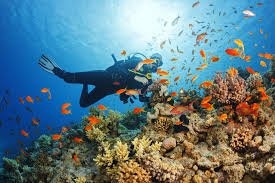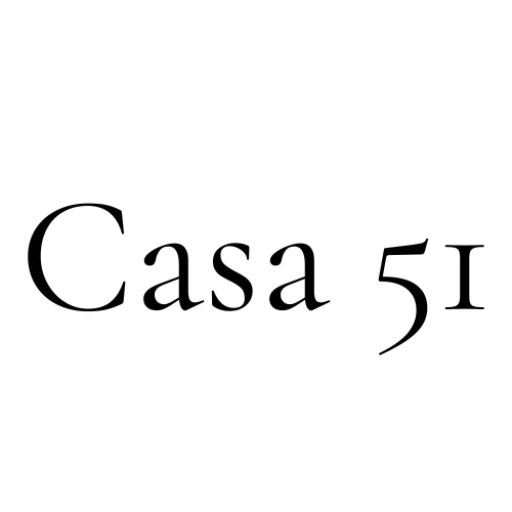
Introduction: Dive into the Beauty of Cozumel
Cozumel, Mexico, is a diver’s paradise—renowned for its crystal-clear waters, vibrant coral reefs, and abundant marine life. Whether you’re a beginner looking to take your first breath underwater or an experienced diver ready to explore dramatic drop-offs and underwater caves, Cozumel offers it all. However, scuba diving is more than just strapping on a tank and plunging into the ocean. It’s an exhilarating yet technical sport that requires preparation, knowledge, and respect for safety protocols.
In this guide, we’ll cover everything you need to know about scuba diving in Cozumel, including the science behind diving, potential safety hazards, and tips to make the most of your underwater adventure—all while staying at the luxurious Casa 51 villa.
1. Why Cozumel Is a Scuba Diver’s Dream Destination
World-Class Coral Reefs
Cozumel sits at the heart of the Mesoamerican Barrier Reef System, the second-largest reef in the world. Palancar Reef and Columbia Wall are just two of the stunning dive sites where you can experience vibrant coral gardens, towering walls, and tunnels teeming with marine life. The visibility here often exceeds 100 feet, making it ideal for underwater photography.
Marine Biodiversity
From colorful angelfish and parrotfish to majestic eagle rays and sea turtles, Cozumel’s waters host an incredible array of marine species. You may even encounter nurse sharks and the occasional hammerhead.
Accessibility and Comfort
Cozumel is easily accessible via ferry or direct flights, and accommodations like Casa 51 offer divers a luxurious retreat after a day of exploration. With private amenities and proximity to dive shops and piers, it’s the perfect base for your adventure.
2. Understanding the Physics of Scuba Diving
Scuba diving relies on principles of physics and physiology that divers need to grasp to stay safe. Let’s break down the basics:
Pressure and Boyle’s Law
As you descend underwater, the pressure increases, compressing the air in your lungs and scuba tank. According to Boyle’s Law, the volume of gas decreases as pressure increases. This is why divers need to equalize their ears frequently and monitor their air supply carefully.
Nitrogen Absorption and Decompression Sickness
While breathing compressed air, nitrogen dissolves into your bloodstream. Ascending too quickly can cause nitrogen bubbles to form, leading to decompression sickness (the bends). To prevent this, divers follow a slow ascent and may perform safety stops.
Buoyancy Control
Mastering buoyancy is essential for energy conservation and protecting delicate coral reefs. Divers use a buoyancy control device (BCD) to manage their position in the water, avoiding accidental contact with marine life or rapid ascents.
3. Safety First: Key Precautions for Scuba Diving in Cozumel
Certification and Training
Always dive with a certified instructor if you’re a beginner. Organizations like PADI and SSI offer courses in Cozumel, ensuring you’re well-prepared.
Equipment Checks
Before every dive, inspect your gear. Verify that your regulator, mask, fins, and BCD are in perfect working order. Rental equipment should be tested before leaving the shop.
Buddy System
Never dive alone. Having a buddy provides an extra layer of safety in case of emergencies, such as equipment failure or disorientation.
Weather and Currents
Cozumel’s drift diving is famous, but strong currents require advanced skills. Check weather conditions and plan dives accordingly. Your dive operator will often handle this, but it’s always good to stay informed.
4. Top Dive Sites in Cozumel
Palancar Reef
Known for its massive coral formations and swim-throughs, this site is perfect for all levels of divers. Keep an eye out for sea turtles and barracudas.
Santa Rosa Wall
This dramatic wall drops off into the abyss, offering spectacular views and encounters with larger marine species like eagle rays.
Columbia Deep
Ideal for experienced divers, this site features caves, tunnels, and overhangs teeming with marine life.
Paradise Reef
Shallow and calm, Paradise Reef is great for beginners and night dives where octopuses and lobsters come out to play.
5. Make Your Stay Luxurious at Casa 51
After a thrilling day of exploring Cozumel’s underwater world, retreat to Casa 51, a luxury villa designed for comfort and relaxation. With spacious suites, a private pool, and stunning ocean views, Casa 51 caters to divers looking for a premium experience.
Dive-Friendly Amenities
- Equipment Storage: Safely store your gear between dives.
- Outdoor Showers: Rinse off saltwater before stepping inside.
- Proximity to Dive Shops: Easily access top-rated dive operators.
Relaxation After the Dive
Unwind in the villa’s infinity pool or enjoy a sunset dinner on the terrace. With modern amenities and personalized service, Casa 51 makes your dive trip unforgettable.
Conclusion: Ready to Dive In?
Scuba diving in Cozumel is more than just a sport—it’s an exploration of an underwater paradise. Understanding the physics, safety protocols, and dive site highlights can help you make the most of this incredible experience. And when you stay at Casa 51, you’re not just diving—you’re living in luxury.
So, are you ready to take the plunge? Start planning your scuba diving adventure in Cozumel today, and let Casa 51 be your home away from home!
